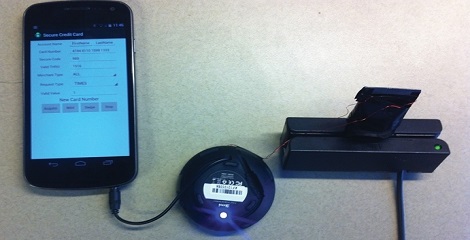For the first time, researchers have developed an inexpensive, secure method to prevent mass credit card fraud using existing magnetic card readers with novel technique called SafePay.
- The research, led by Yinzhi Cao of Lehigh University will be presented at the IEEE Conference on Communications and Network Security, September 28-30, in Florence, Italy.
(IEEE – Institute of Electrical and Electronics Engineers) - The study will also be published as paper “SafePay: Protecting against Credit Card Forgery with Existing Magnetic Card Readers”
It will overcome the limitation of existing magnetic card readers which use plain text to store confidential information, which makes them vulnerable to an untrusted card reader or skimming device
UNIQUE FEATURES OF “SafePay”
- Disposable credit card information that expires after a limited time or number of usages i.e. just one time.
- A magnetic credit card chip that makes it completely compatible with existing readers and the cost of it is about fifty cents, and could be even lower if manufactured in large scale.
- A mobile banking application that automates the process making it extremely user-friendly.
HOW IT WORKS
- User downloads and executes the mobile banking application which communicates with the bank server.
- During transactions, the mobile application acquires disposable credit card numbers from the bank server, generates a wave file, plays the file to generate electrical current, and then drives the magnetic card chip via an audio jack or Bluetooth.
SafePay is related to Cyber-Physical Systems (CPS) which consists of computational elements that control physical entities.
- The computational elements in SafePay consist of a mobile device and a server which distributes disposable credit card numbers.
- The physical entity is the magnetic credit card chip controlled by a mobile application inside a customer’s mobile device.
AffairsCloud Recommends Oliveboard Mock Test
AffairsCloud Ebook - Support Us to Grow
Govt Jobs by Category
Bank Jobs Notification





